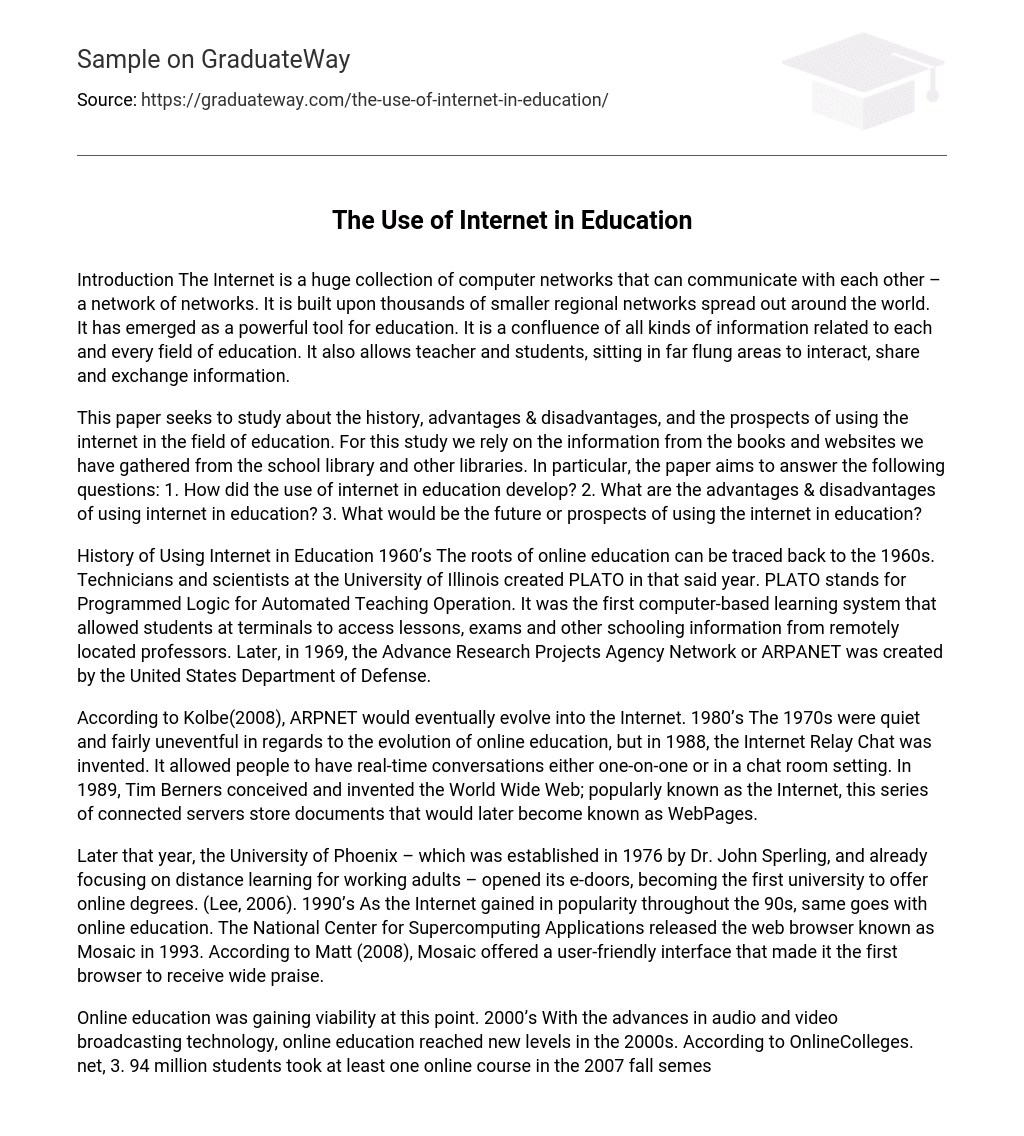Introduction The Internet is a huge collection of computer networks that can communicate with each other – a network of networks. It is built upon thousands of smaller regional networks spread out around the world. It has emerged as a powerful tool for education. It is a confluence of all kinds of information related to each and every field of education. It also allows teacher and students, sitting in far flung areas to interact, share and exchange information.
This paper seeks to study about the history, advantages & disadvantages, and the prospects of using the internet in the field of education. For this study we rely on the information from the books and websites we have gathered from the school library and other libraries. In particular, the paper aims to answer the following questions: 1. How did the use of internet in education develop? 2. What are the advantages & disadvantages of using internet in education? 3. What would be the future or prospects of using the internet in education?
History of Using Internet in Education 1960’s The roots of online education can be traced back to the 1960s. Technicians and scientists at the University of Illinois created PLATO in that said year. PLATO stands for Programmed Logic for Automated Teaching Operation. It was the first computer-based learning system that allowed students at terminals to access lessons, exams and other schooling information from remotely located professors. Later, in 1969, the Advance Research Projects Agency Network or ARPANET was created by the United States Department of Defense.
According to Kolbe(2008), ARPNET would eventually evolve into the Internet. 1980’s The 1970s were quiet and fairly uneventful in regards to the evolution of online education, but in 1988, the Internet Relay Chat was invented. It allowed people to have real-time conversations either one-on-one or in a chat room setting. In 1989, Tim Berners conceived and invented the World Wide Web; popularly known as the Internet, this series of connected servers store documents that would later become known as WebPages.
Later that year, the University of Phoenix – which was established in 1976 by Dr. John Sperling, and already focusing on distance learning for working adults – opened its e-doors, becoming the first university to offer online degrees. (Lee, 2006). 1990’s As the Internet gained in popularity throughout the 90s, same goes with online education. The National Center for Supercomputing Applications released the web browser known as Mosaic in 1993. According to Matt (2008), Mosaic offered a user-friendly interface that made it the first browser to receive wide praise.
Online education was gaining viability at this point. 2000’s With the advances in audio and video broadcasting technology, online education reached new levels in the 2000s. According to OnlineColleges. net, 3. 94 million students took at least one online course in the 2007 fall semester. That is 20 percent of all higher education students in the United States. Now, OnlineColleges. net states that roughly half of the 4,500 physical colleges in the U. S. offer online education to some degree. The Advantages of Using Internet in Education





